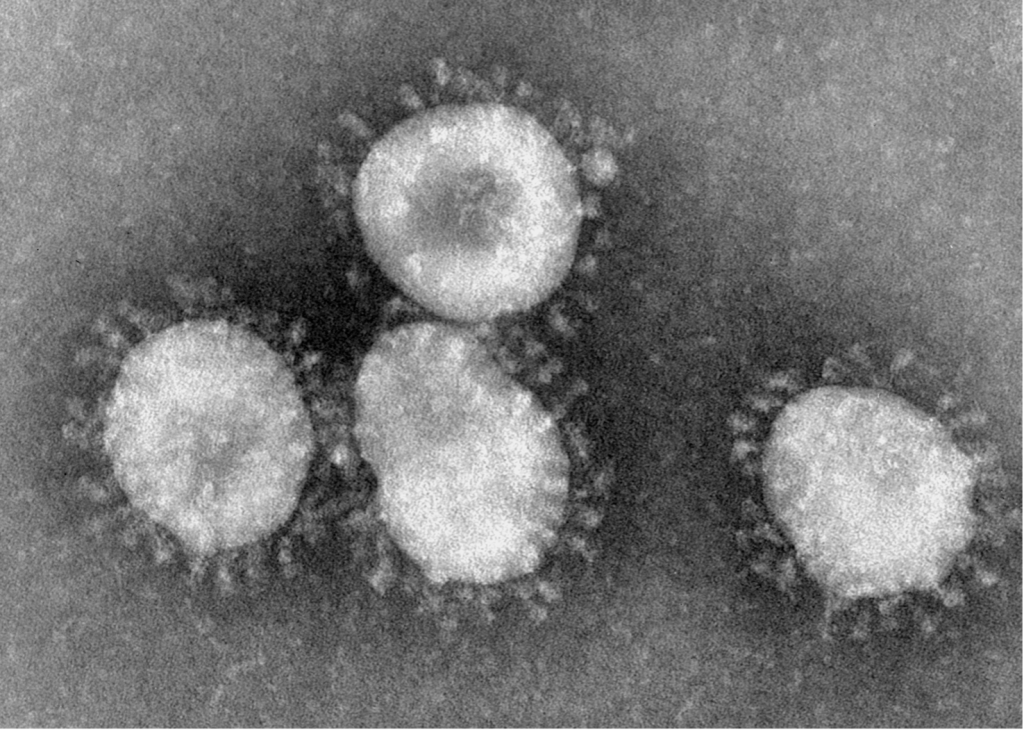Coronavirisus are a large group of positive-stranded RNA viruses that belong to the Coronaviridae family. They are named after the characteristic appearance of virions in electron micrographs that is reminiscent of a solar corona. While most coronaviruses infect only animals, seven Coronaviruses are known which infect humans. Four of the human Coronaviruses cause mild to moderate symptoms. However, since 2002 three coronaviruses have jumped from animals to humans and caused severe disease. Most significantly, SARS-CoV-2 caused the global Covid-19 pandemic that has caused over 4 million deaths worldwide.
Common cold
Diseases termed “common cold” are predominantly caused by rhinoviruses, but about 15% of these mild to moderate infections are caused by coronaviruses. The four coronaviruses that can cause the common cold in humans are HCov-229E, HCov-NL63, HCov-OC43, and HCov-HKU1. These viruses continuously circulate in the human population and cause seasonal outbreaks.
SARS
In 2002, a new Coronavirus (termed SARS-CoV) emerged that caused severe acute respiratory syndrome (SARS). The mortality rate of people infected with SARS-CoV was about 11%. The virus spread worldwide and was particular prevalent in asian country. The outbreak was contained by the end of 2003.
MERS
Middle Eastern respiratory syndrome (MERS) is caused by the MERS-Coronavirus (MERS-CoV). The disease was first identified in 2012 and causes severe disease with a fatality rate of up to 35%.
MERS-CoV circulates in dromedary camel populations in multiple countries, and most human cases have been reported in Saudi Arabia. Due to the animal reservoir, MERS continues to cause sporadic outbreaks.
COVID-19
Coronavirus disease 2019 (COVID-19) is the disease caused by SARS-CoV-2. While the severity of the symptoms is less severe than for SARS MERS, the SARS-CoV-2 virus was substantially more infectious and caused a global pandemic.
Several vaccines have been licensed that offer robust protection against SARS-CoV-2 infection. Vaccine candidates against SARS-CoV or MERS-CoV exist but have not been licensed yet. However, due to the large diversity of circulating Coronaviruses in animal reservoirs, the risk of a novel coronavirus adapting to humans is a constant threat, as underscored by the three coronaviruses that have crossed from animals to humans in the past 20 years. Therefore, vaccines and therapeutics capable of broad action against diverse coronaviruses are required to prevent a future pandemic.

Transmission electron microscopic image of HCov-229E. Coronaviruses are named after the appearance of the virions in electron micrographs, which resemble a solar corona due to the large cell-surface proteins (called spike-proteins) surrounding the enveloped virion. Image credit: Dr. Fred Murphy; Sylvia Whitfield. https://phil.cdc.gov/Details.aspx?pid=10270
Further information:
https://www.who.int/health-topics/coronavirus#tab=tab_1
https://www.who.int/news-room/fact-sheets/detail/middle-east-respiratory-syndrome-coronavirus-(mers-cov)
